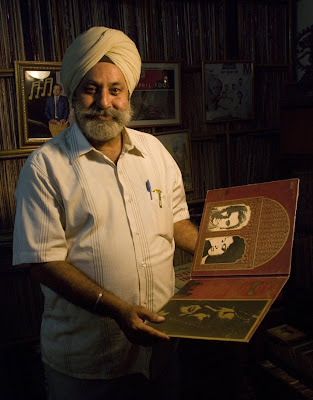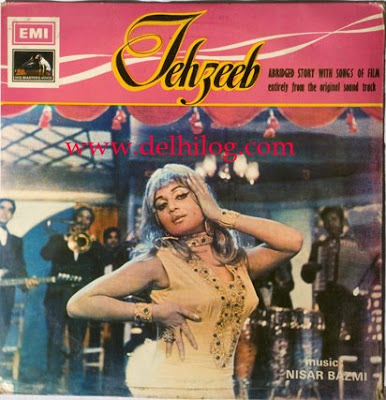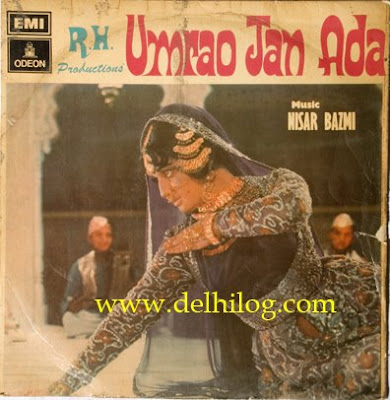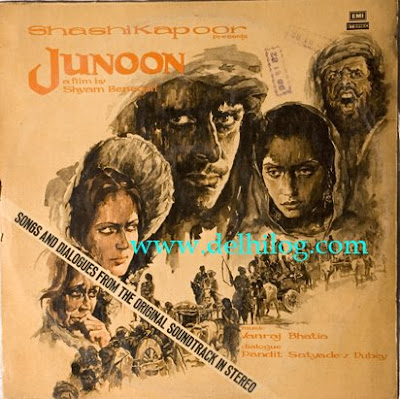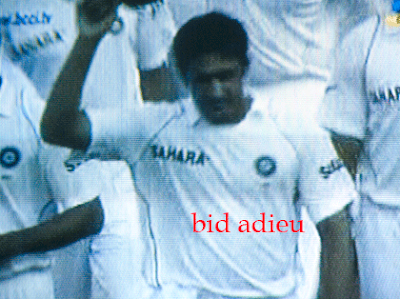Period of the episode – The unrest of Year 1857 in Delhi
Place of incident – Dariba Kalan, Delhi
One day, I was passing through Dariba , when I saw a cavalcade of Tilangas coming from one end. Every passerby hurriedly got to a side to let the cavalcade pass. I too, stood aside in front of the shop of Gulab Gundhi (pronounced Gun-dhi as in sun….fun…gun) and watched the cavalcade pass by. The procession consisted of 50 to 60 horsemen, led by a band of drummers. The horses were burdened with huge bales, condemning them to look more like a washer man’s (dhobi’s) donkey, rather than a horse. Anyone could guess that the bales contained the loot from Delhi’s rich and prosperous gentry. Any one, wealthy and worthy, would be threatened with the charges of siding with the British and would be let off only after he paid up for his innocence. The wealthy and worthy gentry of Delhi would have long ago deserted Delhi, had they not seen a ray of hope in the British companies, who were still surrounding Delhi.
The contingent, shouting slogans in the name of God, marched passed in front of me. In the crowd of the contingent was their commander – Aali Janab Bahadur Khan Sahab. From the uniform that he was wearing, he looked more like a bridegroom than a commander. He had adorned himself with ornaments studded with jewels. And while wearing them he had not even bothered to distinguish between the ornaments that were worn by the men and the ones that were meant for women! And in the way the commander was embellished in the studded ornaments, his horse too was decorated likewise. When Gulab Gundhi saw the cavalcade coming, he quietly shut the doors of his shop and kept peeping at the passing parade, through the door.
God knows, what a coincidence it was, that Bahadur Khan’s horse stopped right in front of his shop. Bahadur Khan looked around and asked whose shop was it. His orderly replied, “Gulab Gundhi’s”. Bahadur Khan was furious. “Does the wretched man not know that His Highness is passing by? Why has he shut the doors of the shop? Get it opened ! Pronto !!”
Unaware of what would have Lalaji gone through by this ‘deadly sounding decree’, all we saw was that a soldier hit the door with the handle of his sword and commanded, “open the door!” At the order, the door of Gulab Gundhi’s shop opened like the door that used to instantly open at the words, “open, sesame”, in the story of Alibaba and Forty Thieves. Gulab Gundhi stood at the door with folded hands, panting and trembling. He wanted to say something but his tongue refused to be with him. On that day, Bahadur Khan was comparatively in a happier mood. Probably he had a field day. He asked if the attar (essential oils) used by the King were sent from his shop ? Lalaji, vigorously jerked his neck in affirmative. He was ordered to present the best product that was available in his shop.
Stumbling, Lalaji went inside and appeared with two decanters full of attars. It’s not sure whether the attars were priced at Rs.20 per tola (10 gms.) or Rs.30. Bahadur Khan took both the decanters and without bothering to remove the stoppers, he clashed the necks of the bottles with each other and broke them. He smelled from the one; liked it and poured it on his horse’s nape. With the other he drenched the hair of the tail of his horse and after throwing away the bottles he ordered his army – “Forward !” leaving Lalaji behind, with a loss of hundreds of rupees.
(the text is a translation of the original article printed in the Hindi daily ‘Navbharat Times’, New Delhi, 19th July, 1965 P.4 Column 7&8 by Ayodhya Prasad Goyalia)
Gulab Singh, the sufferer at the hands of Bahadur Khan in the above passage, established the shop of Attars at Dariba Kalan in Chandni Chowk in 1816. Now famous as Gulab Singh Johri Mal (Shop No.320), the tradition of manufacturing attars is being carried on by the great,great,great grandsons of Gulab Singh Ji.

It is said that during the reign of Akbar Shah II, the nobility, including the nawabs, rajahs, landlords and subedars, sat for hours with Gulab Singh Ji, delicately sniffing and selecting their attars placed in exquisite boxes with ivory in-laid work. Belgian cut glass decanters were sent to the inner sanctums of the Mughal queens and princesses, to sample and select their favourite frangrances. Now after two centuries, a steady stream of discerning customers and the connoisseurs can still be seen selecting their favourite attars.
Ram Singh the fourth descendant in the clan of Gundhis, explains how their ancestral work began around two centruries ago. The 70 year old Gundhi, nostalgically recounts his Grandfather Lala Banarsi Das telling him that there was a lake called Nahr-e-Bahisht (Lake from Paradise) in Chandni Chowk when their shop was opened. And Dariba Kalan was the main shopping centre for the Shahjahanabadis.
Attar is a Persian word meaning ‘fragrance’. Attars have been famous in the Arab and India for over 5,000 years. The English word otto is a transliteration of the original Arabic word (‘itr). These are the essential oils extracted majorly from the naturally occurring odoriferous substances such as flowers, roots, herbs and spices. Aromatic perfume materials are blended together to form true fragrances in pure concentrate forms, free from alcohol and spirits. As easy it may sound, the process of extracting attar is very tedious and requires a great amount of skill.
Inspite of the latest technology available for distillation, yet the Attars are made traditionally by Deghs (copper stills) and Bhapka (steam distillation) system, which is a hydro distillation  process. Archaeological excavations have revealed round copper stills, used for making attars, that are at least five thousand years old. These stills are called deghs. Following the seasons of the flowers, traditional attar-makers, with their deghs, traveled all over India to make their attars on-the-spot. Even now, rural areas often lack good roads to quickly transport the harvested flowers, and a few traditional attar-makers still travel with their deghs to be close to the harvest. Their equipment has changed little, if at all, in the last five thousand years.
process. Archaeological excavations have revealed round copper stills, used for making attars, that are at least five thousand years old. These stills are called deghs. Following the seasons of the flowers, traditional attar-makers, with their deghs, traveled all over India to make their attars on-the-spot. Even now, rural areas often lack good roads to quickly transport the harvested flowers, and a few traditional attar-makers still travel with their deghs to be close to the harvest. Their equipment has changed little, if at all, in the last five thousand years.
The fresh harvest is placed inside the stills (deghs) and filled with water. The degh is then hermetically (perfectly water proof) sealed with a lid (sarpos) and clay. From the sarpos (lid) runs a bamboo pipe (chonga) through which the vapours are collected in long-necked barrels (bhapka) which is kept immersed in a water tank (gachchi). The still is heated by lighting a fire underneath with the help of wood or cow dung. The temperature and speed of the distillation is controlled by regulating the fire.
The distillation is managed by highly skilled workers called Dighaa, who knows when the correct quantity of vapours have condensed inside the receiver by feeling the round part of the receiver under water. The water in the tank is changed continuously to prevent the temperature rising  too high. Managing the still (large copper kettles) is highly skilled job, as the operator must keep the boiling at a level that matches the condensation in the receiver, so as to keep the pressure under control. When the desired quantity of vapour is condensed, the Dighaa rubs a wet cloth around the body of the still for a temporary pause in distillation and the filled receiver (bhapka) is replaced by another receiver. If necessary, the second may be replaced by a third receiver. The receiver is then allowed to cool.
too high. Managing the still (large copper kettles) is highly skilled job, as the operator must keep the boiling at a level that matches the condensation in the receiver, so as to keep the pressure under control. When the desired quantity of vapour is condensed, the Dighaa rubs a wet cloth around the body of the still for a temporary pause in distillation and the filled receiver (bhapka) is replaced by another receiver. If necessary, the second may be replaced by a third receiver. The receiver is then allowed to cool.
The mixture of oil and water is then separated either directly form the receiver through a hole at the bottom or pouring the whole mixture in an open trough, after the separation, the water is removed from an opening at the bottom.
After desired concentration of the attar is reached, it is then poured into leather bottles for  sedimentation and removal of moisture. The concentrate thus obtained is filled in crystal bottles with a matted glass stoppers called itradan.
sedimentation and removal of moisture. The concentrate thus obtained is filled in crystal bottles with a matted glass stoppers called itradan.

Apart from the original shop established in 1816, Gulab Singh Johri Mal, has another show room in the Main Chandni Chowk (opposite The Town Hall).
Mukul Gundhi, one of the brothers of the seventh generation of the two-century old clan narrates about the customary practice in nobility to offer attar to their  guests. The most common method of applying Attar practised by them was to rub a small amount of oil over the extended right hand palm down. This is also the etiquette of receiving attar when offered by someone. The regular way of wearing attar is by applying it
guests. The most common method of applying Attar practised by them was to rub a small amount of oil over the extended right hand palm down. This is also the etiquette of receiving attar when offered by someone. The regular way of wearing attar is by applying it  behind the ears beneath the lobes. This is done with the help of a small stick attached to the cap of the bottle and which remains immersed in the perfume when the cap is shut. Connoisseurs also put one or two drops of attar oil on a small piece of cotton (about the size of the end of a cotton bud or swab) then insert the cotton piece in the ridge like edge of the ear.
behind the ears beneath the lobes. This is done with the help of a small stick attached to the cap of the bottle and which remains immersed in the perfume when the cap is shut. Connoisseurs also put one or two drops of attar oil on a small piece of cotton (about the size of the end of a cotton bud or swab) then insert the cotton piece in the ridge like edge of the ear.
The ornate shelves in the orginal shop at Dariba and the Showroom at Chandni Chowk are decoratively lined with Belgian cut glass decanters of different shapes and sizes containing the fragrances of various flowers. The brothers relate the tale of  tiresome and time consuming process in searching and gathering of fresh and pure flowers. For Rooh Gulab, the attar of Rose, they visit the flower gardens of Kannauj, Sikatra near Aligarh, Ghazipur and Jaunpur (all in U.P). The condition is that the flowers must be plucked at dawn and used before the sun rises. For after that, the fragrance begins to leave the blooms. For Chameli and Motia, they have to go to Sikandarpur and some villages of Varanasi. For Kewra, Molsari, Champa and Harsingar flowers, they have to visit the villages of Orissa. As the harvest of flowers used for making attars has to be fresh, Gulab Singh Johri Mal have distillation units at all these places.
tiresome and time consuming process in searching and gathering of fresh and pure flowers. For Rooh Gulab, the attar of Rose, they visit the flower gardens of Kannauj, Sikatra near Aligarh, Ghazipur and Jaunpur (all in U.P). The condition is that the flowers must be plucked at dawn and used before the sun rises. For after that, the fragrance begins to leave the blooms. For Chameli and Motia, they have to go to Sikandarpur and some villages of Varanasi. For Kewra, Molsari, Champa and Harsingar flowers, they have to visit the villages of Orissa. As the harvest of flowers used for making attars has to be fresh, Gulab Singh Johri Mal have distillation units at all these places.
Attars have their medicinal and climatic uses too. Unlike the alcoholic deodorants and sprays, attars have never been classified separately for men and women. The subtle blending of the various aromas is like the creation of a melody – the top note, middle note and the end note. And like various the various ragas, the use of attars match the season of the year. Spring and summer are for the bright, happy, flowery fragrances. And especially for the very hot summer months, there is the sharp clean freshness of Khus. The cool taaseer (tendency/character) of the Khus protects from the hot surface winds. The Gill essence is more exotic. It captures that ever fresh aroma that emanates from the earth after the first summer showers. It is made by creating same conditions in the still (degh) that prevails when when the first rains of the season falls on the parched land after a long summer. Just like Khus and Gill are cooling and appropriate for use during the summer, Hina and Musk are ideal for winters becuase of their hot taaseer.
People using foreign perfumes keep changing from brand of perfume to another, sans satisfaction. A very specific fact about attars is, that people keep using the same fragrance for years together – in fact for the whole life !
 A little bit of trivia now!
A little bit of trivia now!
After the bewitching model Naomi Campbell fell for the attar Mehndi, the fragrance is in vogue in the Parisian fashion seminaries.
The ex-President of India, Late Dr. S. Radhakrishnan was fond of attar Majmua and ex-President Late Dr. Shankar Dayal Sharma, used to wear attar Chameli while attending formal functions. Maulana Abul Kalam Azad was also fond of attar Majmua.
The queen of all attars happens to be Rooh Gulab. It was discovered by Noorjahan, the wife of Mughal emperor, Jahangir. Once while she went for her morning bath, she found an oily layer over the water which was kept to cool overnight with rose petals in it. When it was distilled later on her orders, it turned out the costliest attar.
 Suraj Kund Crafts Mela – The annual venture of the Haryana Tourism was inaugurated by the President of India – sans the Haryanvi ‘nagada’ players immaculately dressed in white dhoti kurta and wearing ‘kesari’ turbans and garlands of marigold flowers and the other folk musicians and dancers from the different States of India. Welcome to the advent of the 23rd Spring season of the fair was all very silent due ot the national mourning on the demise of the ex-President of India, Shri Venkataraman. Every year a State of India is chosen as the theme of the Mela. This year, Madhya Pradesh has been chosen as the theme. Madhya Pradesh, dotted with world heritage sites such as Khajuraho, Sanchi and Bhimbetka and other archealogical treasures like Mandu, Orchha and Gwalior, is also the land of The National Parks of Kanha, Bandhavgarh and Panna. Tigeres and many other wildlife species find home at these amazing National Parks. This vast plateau of Central India lies in the cradle of Satpura and Vindhya mountain ranges with the lush valleys and the rivers Narmada and Sone bringing serenity to the land. The capital city of
Suraj Kund Crafts Mela – The annual venture of the Haryana Tourism was inaugurated by the President of India – sans the Haryanvi ‘nagada’ players immaculately dressed in white dhoti kurta and wearing ‘kesari’ turbans and garlands of marigold flowers and the other folk musicians and dancers from the different States of India. Welcome to the advent of the 23rd Spring season of the fair was all very silent due ot the national mourning on the demise of the ex-President of India, Shri Venkataraman. Every year a State of India is chosen as the theme of the Mela. This year, Madhya Pradesh has been chosen as the theme. Madhya Pradesh, dotted with world heritage sites such as Khajuraho, Sanchi and Bhimbetka and other archealogical treasures like Mandu, Orchha and Gwalior, is also the land of The National Parks of Kanha, Bandhavgarh and Panna. Tigeres and many other wildlife species find home at these amazing National Parks. This vast plateau of Central India lies in the cradle of Satpura and Vindhya mountain ranges with the lush valleys and the rivers Narmada and Sone bringing serenity to the land. The capital city of  Bhopal and the hillstations of Panchmarhi and Shivpuri are an ideal and authentic tourist attractions.
Bhopal and the hillstations of Panchmarhi and Shivpuri are an ideal and authentic tourist attractions.

 खो, भिम्भेटका कलाकारी देखो !
खो, भिम्भेटका कलाकारी देखो ! yes open, open see !
yes open, open see !
